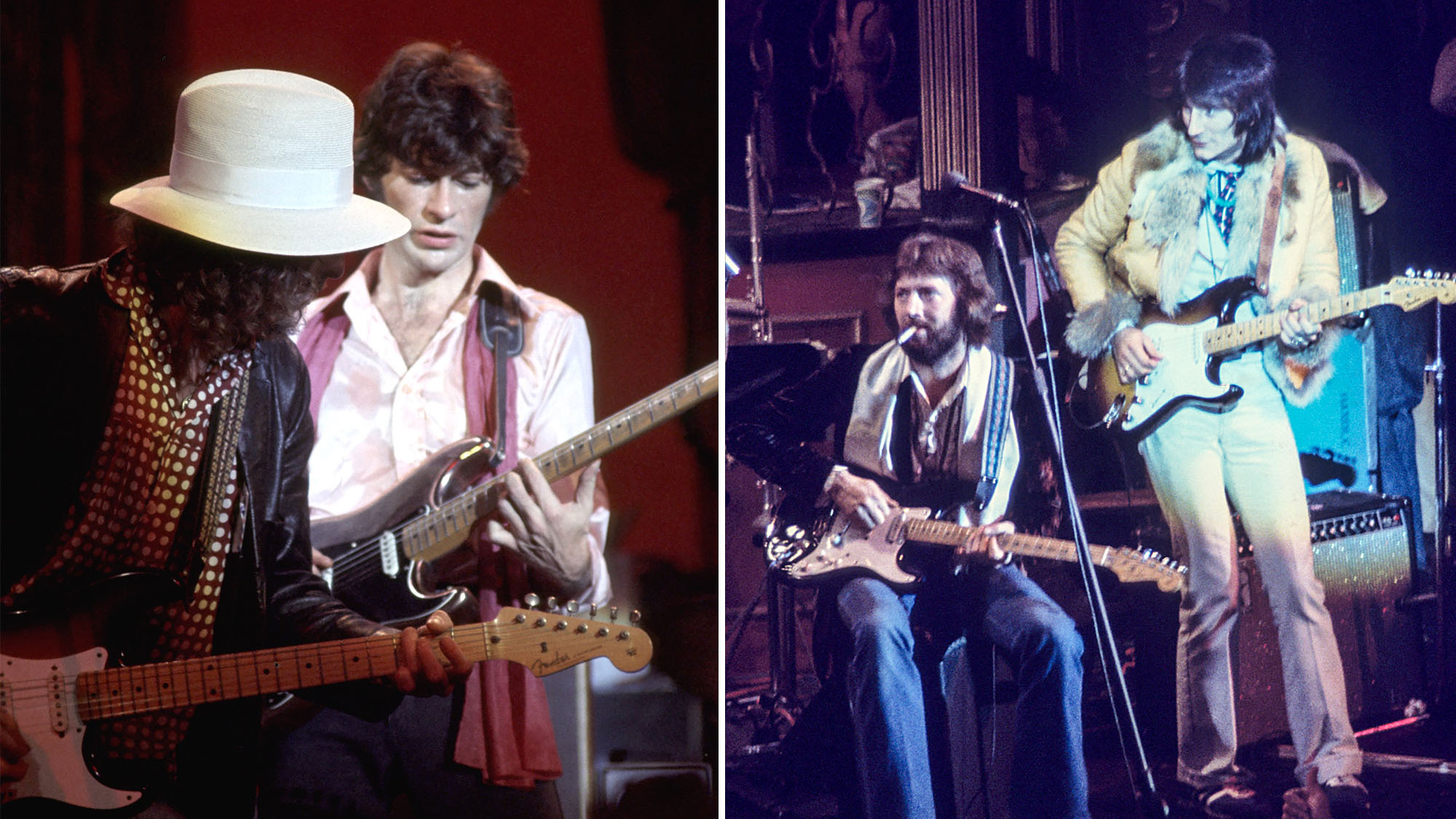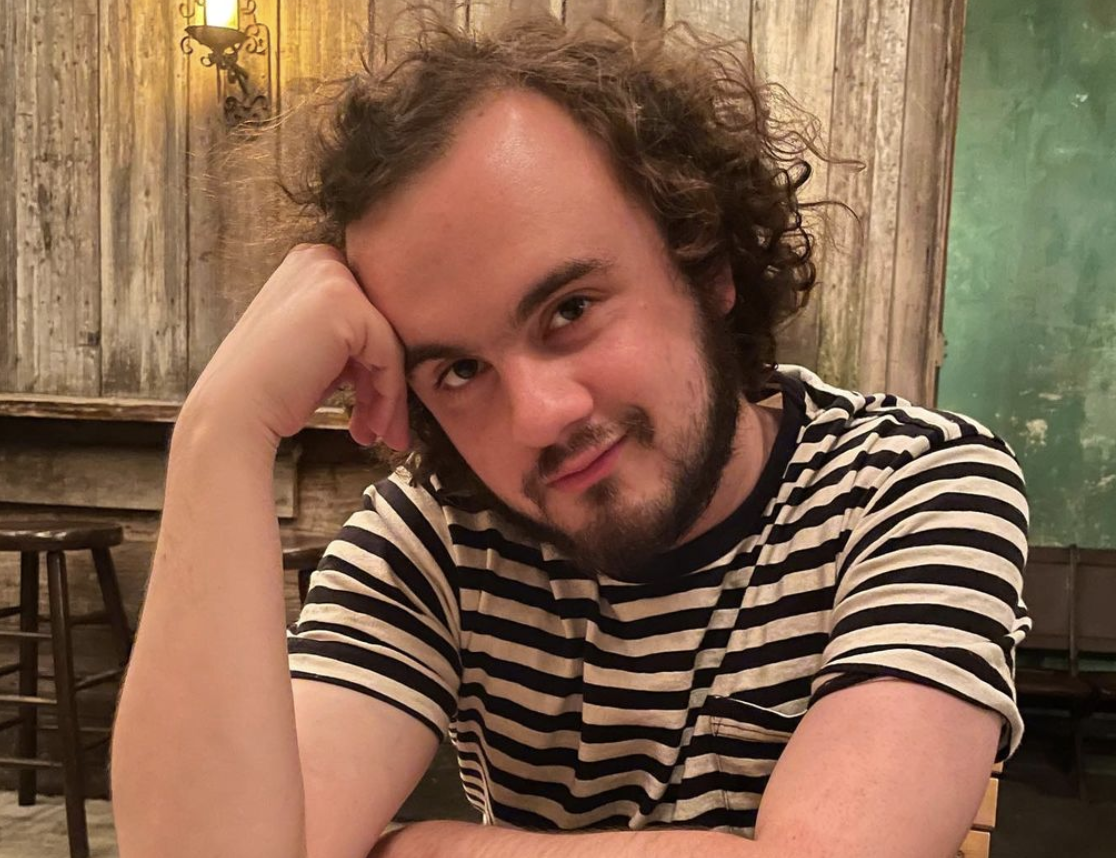The greatest Strat army in history? Watch Bob Dylan and Robbie Robertson lead Eric Clapton, Ronnie Wood and more in a historic rendition of I Shall Be Released
Also featuring Neil Young, Ringo Starr, Joni Mitchell and Van Morrison, and captured for the film The Last Waltz by Martin Scorsese, the breathtaking performance features more legends-per-square-foot than perhaps any in rock's lengthy arc

Set at The Band's "farewell concert" of the same name on Thanksgiving Day (November 25), 1976, and directed by Martin Scorsese, The Last Waltz captures one of the most momentous, over-the-top and star-studded concerts in rock music history.
Though centered around The Band themselves, it's most famous for a scarcely believable guest list that included, but was not limited to: Eric Clapton, Joni Mitchell, Muddy Waters, Van Morrison, Ringo Starr, Neil Young, Stephen Stills, Paul Butterfield, Emmylou Harris, and, of course, the man who brought The Band into the limelight, Bob Dylan.
You could write a book on all the electric guitar greatness that occurred at the five-hour show, with an obvious highlight being the two solo-heavy, star-studded jams that went down during its second encore.
The concert's first encore, though, was its climactic moment, and it's powered by one of the greatest Fender Stratocaster armies ever assembled.
For a truly show-stopping version of I Shall Be Released – a Dylan tune made famous by The Band on their debut album, Music from Big Pink – Dylan, Band guitarist Robbie Robertson, Eric Clapton and Ronnie Wood led one of the most star-studded rock ensembles to ever grace a stage.
Ranked by Rolling Stone as the 6th greatest song Dylan's ever written, and influential enough that even The Beatles jammed on it, I Shall Be Released is one of rock's most towering hymnals, an elegant, yearning ballad that calls for the kind of ragged, evening-ending and (let's be honest here) intoxicated group sing-along that it got in The Last Waltz.
One thing the subdued, melancholy tune does not call for, however, is a blaring guitar presence.
All the latest guitar news, interviews, lessons, reviews, deals and more, direct to your inbox!
For instance, rather than pick up his fire-breathing "Old Black" Gibson Les Paul – as he would later in the evening – Last Waltz guest Neil Young stuck to providing just backing vocals on I Shall Be Released, with fellow guest and guitar great Joni Mitchell doing the same.
The fearsome foursome of Dylan, Robertson, Clapton and Wood – all using gorgeous Strats – focused, then, on rhythm work and tasteful little embellishments, so as to not overshadow the evening's most poignant moment.
According to Reverb.com, Dylan used a '50s-era Strat, while Wood toiled away on one from the late '60s/early '70s. Both, by the looks of it, are graced with the classic sunburst finish.

Clapton, meanwhile, used "Blackie", the legendary black Strat that served as his chief six-string from 1974 through 1985. Notably, this same guitar went on to be sold for a then world-record $959,000 at auction in 2004, and it remains one of the most expensive guitars ever sold at auction.
Of all the beautiful guitars on the stage though, it was Robbie Robertson's "bronzed" 1954 Strat that was the most fascinating of the lot.
Purchased by the Band guitarist from Norman’s Rare Guitars in 1973, the Strat was used by Robertson on multiple Dylan albums (on which the legendary singer/songwriter was backed by the Band), before receiving quite the makeover for the big screen.
"When we were preparing to do The Last Waltz, I thought, I should do something for the occasion, and I had it bronzed,” Robertson told Guitar Aficionado in 2011. “They dipped the body in bronze, just like they do with baby shoes. They dip it in, leave it for a minute, and then take it out."
“So then they put the guitar back together again, and it had a completely different sound to it. Just like you would think, it had a more metallic sound. And I liked the sound I got out of it, but it was heavier.”
The unique-sounding Strat – which was later recreated in immaculate detail by the Fender Custom Shop for an ultra-limited run of replicas – helped Robertson stand out, sonically and visually, amidst the crowd of six-string heavyweights.
It bears mentioning that The Last Waltz was not well-received by all members of The Band, with drummer Levon Helm in particular later publicly expressing his distaste for the entire project.
It does mark, however, not only the final public performance by the classic lineup of one of rock's most influential bands, but one of the greatest assemblages of musical talent (and Stratocasters, to boot) on a single stage on a single night, ever.
Jackson is an Associate Editor at GuitarWorld.com. He’s been writing and editing stories about new gear, technique and guitar-driven music both old and new since 2014, and has also written extensively on the same topics for Guitar Player. Elsewhere, his album reviews and essays have appeared in Louder and Unrecorded. Though open to music of all kinds, his greatest love has always been indie, and everything that falls under its massive umbrella. To that end, you can find him on Twitter crowing about whatever great new guitar band you need to drop everything to hear right now.


